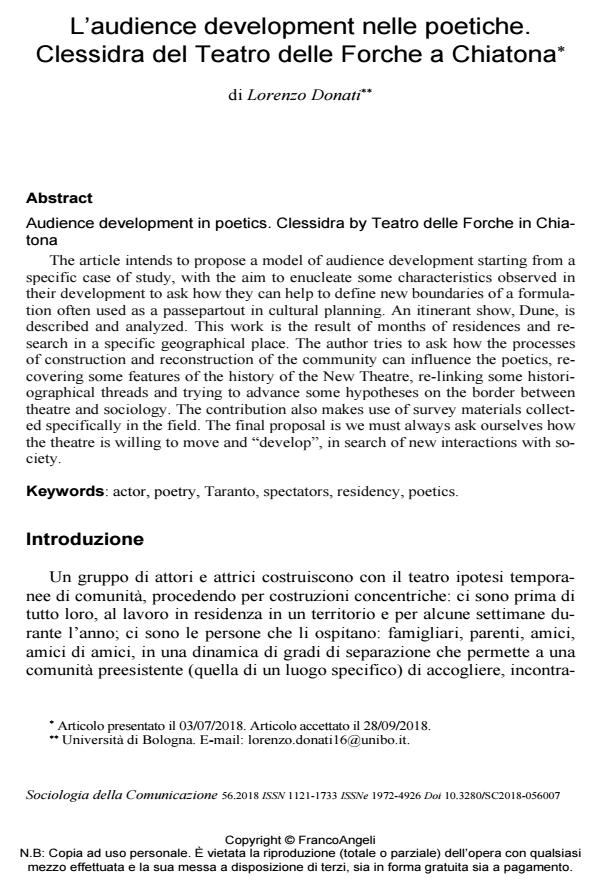L’audience development nelle poetiche. Clessidra del Teatro delle Forche a Chiatona
Titolo Rivista SOCIOLOGIA DELLA COMUNICAZIONE
Autori/Curatori Lorenzo Donati
Anno di pubblicazione 2018 Fascicolo 2018/56
Lingua Italiano Numero pagine 20 P. 103-122 Dimensione file 248 KB
DOI 10.3280/SC2018-056007
Il DOI è il codice a barre della proprietà intellettuale: per saperne di più
clicca qui
Qui sotto puoi vedere in anteprima la prima pagina di questo articolo.
Se questo articolo ti interessa, lo puoi acquistare (e scaricare in formato pdf) seguendo le facili indicazioni per acquistare il download credit. Acquista Download Credits per scaricare questo Articolo in formato PDF

FrancoAngeli è membro della Publishers International Linking Association, Inc (PILA)associazione indipendente e non profit per facilitare (attraverso i servizi tecnologici implementati da CrossRef.org) l’accesso degli studiosi ai contenuti digitali nelle pubblicazioni professionali e scientifiche
The article intends to propose a model of audience development starting from a specific case of study, with the aim to enucleate some characteristics observed in their development to ask how they can help to define new boundaries of a formulation often used as a passepartout in cultural planning. An itinerant show, Dune, is described and analyzed. This work is the result of months of residences and research in a specific geographical place. The author tries to ask how the processes of construction and reconstruction of the community can influence the poetics, recovering some features of the history of the New Theatre, re-linking some historiographical threads and trying to advance some hypotheses on the border between theatre and sociology. The contribution also makes use of survey materials collected specifically in the field. The final proposal is we must always ask ourselves how the theatre is willing to move and "develop", in search of new interactions with society.
Parole chiave:Actor, poetry, Taranto, spectators, residency, poetics.
Lorenzo Donati, L’audience development nelle poetiche. Clessidra del Teatro delle Forche a Chiatona in "SOCIOLOGIA DELLA COMUNICAZIONE " 56/2018, pp 103-122, DOI: 10.3280/SC2018-056007